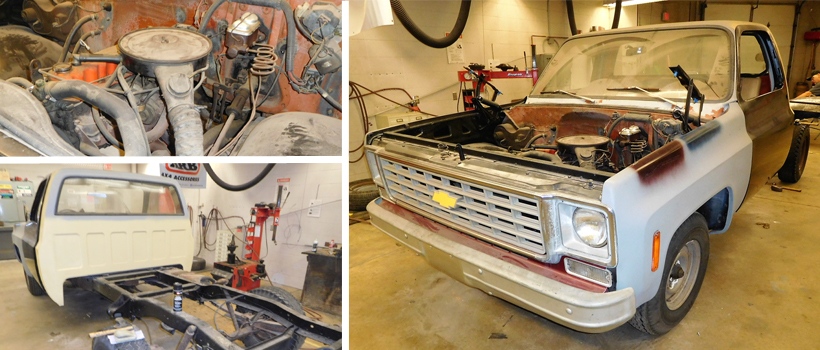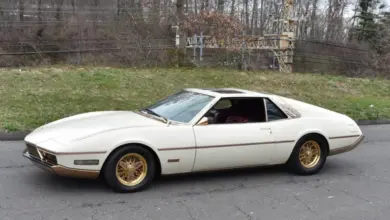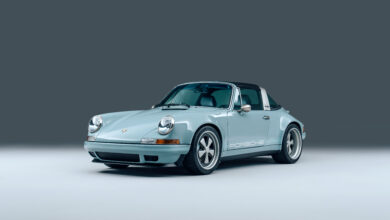Freedom High School’s Future SEMA Build

For the several weeks leading up to the SEMA Show, I wrote all about the 1951 Chevrolet rat rod pickup that was built in the Freedom High School auto shop and displayed in the Blaster Corp. booth at the 2018 SEMA Show in Las Vegas.
The show is over, but there’s no rest for the Freedom High School students and members of the Freedom High School Auto Club. Instead of taking it easy, auto club students are already tearing down a 1975 Chevrolet pickup destined to be the program’s next SEMA Show vehicle. In fact, just as the finishing touches were being worked out on the 1951 Chevy showcased at SEMA, the front-end sheet metal and cab of the 1975 Chevy box body were already being removed.
The Freedom High School Auto Club has learned a lot from sending a vehicle to the SEMA Show during the past two years, such as the importance of starting a project early in the calendar. If you start early and everything goes perfectly, you’ll finish early and make it to SEMA on time with no stress. If you start late, you may still get the truck to the show, but there will be tons of stress.
Right now, the truck has the 250-cid six, but my guess is that engine will be ditched for a V-8 before the pickup goes to Vegas. The truck’s current gray, black, and white primer paint job also needs to go. The kids may stick with a flat or patina type finish, but multi-colors are just not going to cut it. Auto shop Instructor Jay Abitz, most likely will have some good suggestions to make about the powertrain, body design options and paint choices.
Nothing seems to be locked in stone at this point, except the Freedom High School Auto Club’s commitment to doing another SEMA truck. I can’t wait to see what this box body Chevy is going to look like a year from now.
Background
After being totally restyled in a boxy new shape for 1973, the 1974 Chevrolet pickups were virtually unchanged in 1974. Styling changes for the 1975 models were headed by a revamped grille with larger grillwork, clear-lens parking lights and new front fender model identification combining model nameplates and series identification plaques. A restyled tailgate with a quick-release control was used.
The C-10/K-10 pickups with a 6.5-foot box came on the standard 117.5-inch wheelbase. The C10/K10 Pickups with an 8-foot box featured a 131.5-inch wheelbase shared with 1-ton C-30s. The C-20/K-20 ¾-ton pickups were on a 127-inch wheelbase. Custom Deluxe was the base interior. It included a foam-padded bench seat with blue, green, red or saddle plaid upholstery, a body color steel roof panel, black rubber floor mat, padded arm rests, courtesy lamps, prismatic rear view mirror, foam padded dash, bright upper and lower grille outline moldings, bright headlamps bezels, silver plastic grille insert, bright outside rear view mirror, bright door handles, bright Custom Deluxe nameplates and white-painted bumper, hubcaps and wheels.
Chevrolet’s stalwart 250-cid six-cylinder engine had a new, integrally-cast cylinder head with improved-flow intake manifold. The factory offered 15 solid exterior color choices and two-tone options came in conventional, special and deluxe combinations. Most likely, when Freedom High School’s ’75 Chevy is ready to leave for SEMA next year, it won’t be done in factory colors, whether they’re solid or a two-tone combination. Of course, the way that the truck will look may be determined by next year’s sponsors.
The box body trucks have been getting more and more popular with collectors over the past couple of years. To back up this viewpoint, the December 2016 issue of Hemmings Motor News included 20 classified ads for such trucks and dozens more were offered in dealer display ads. So, it would seem that the young builders at Freedom High School are on the money in picking a ’75 Chevy C-10 Custom Deluxe for their project.



